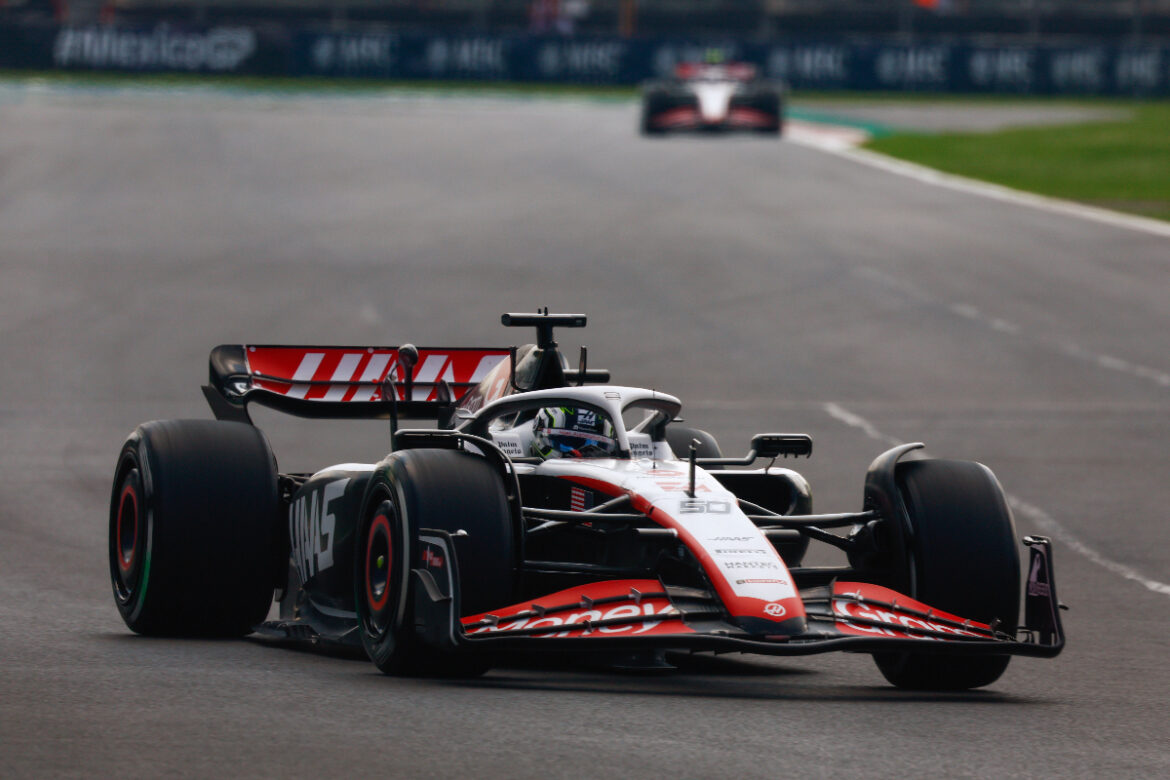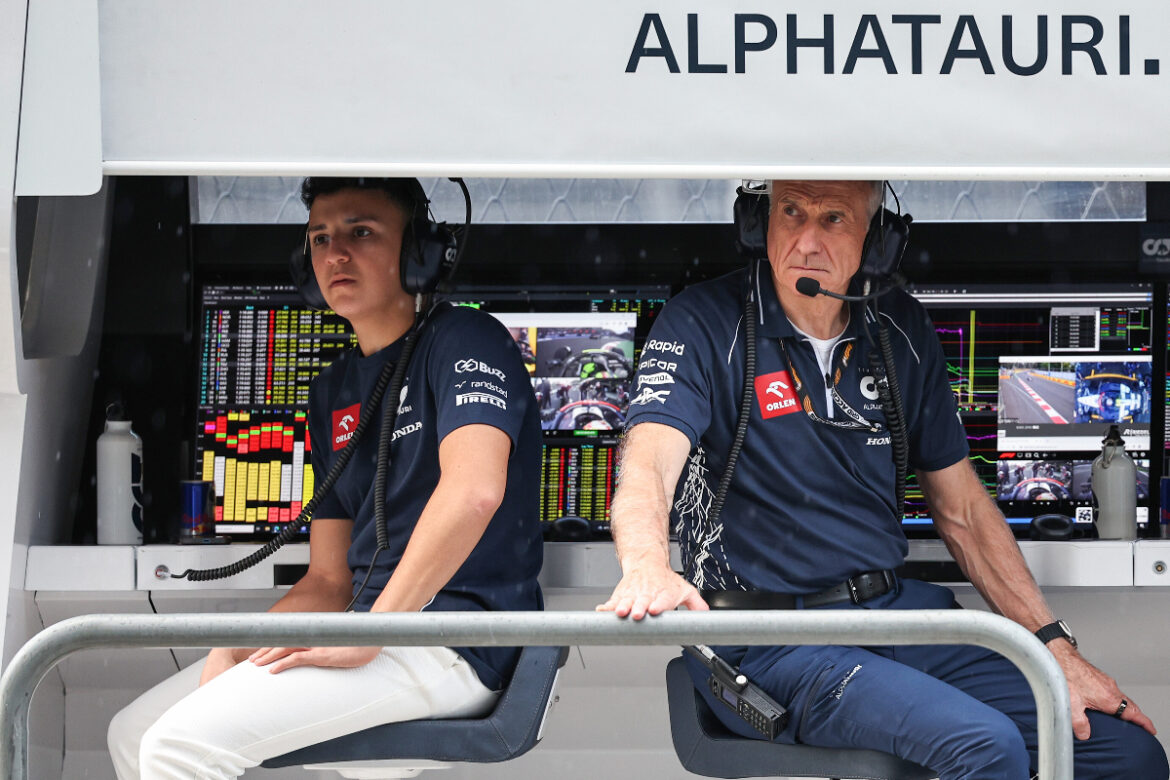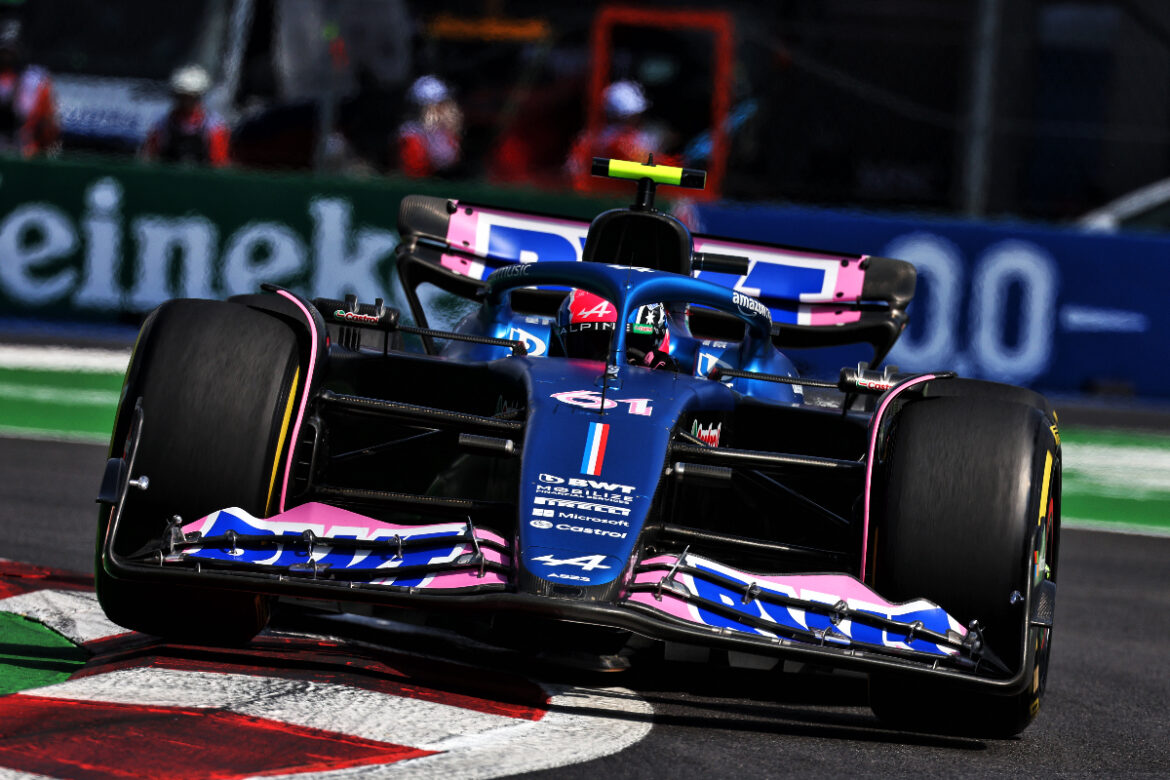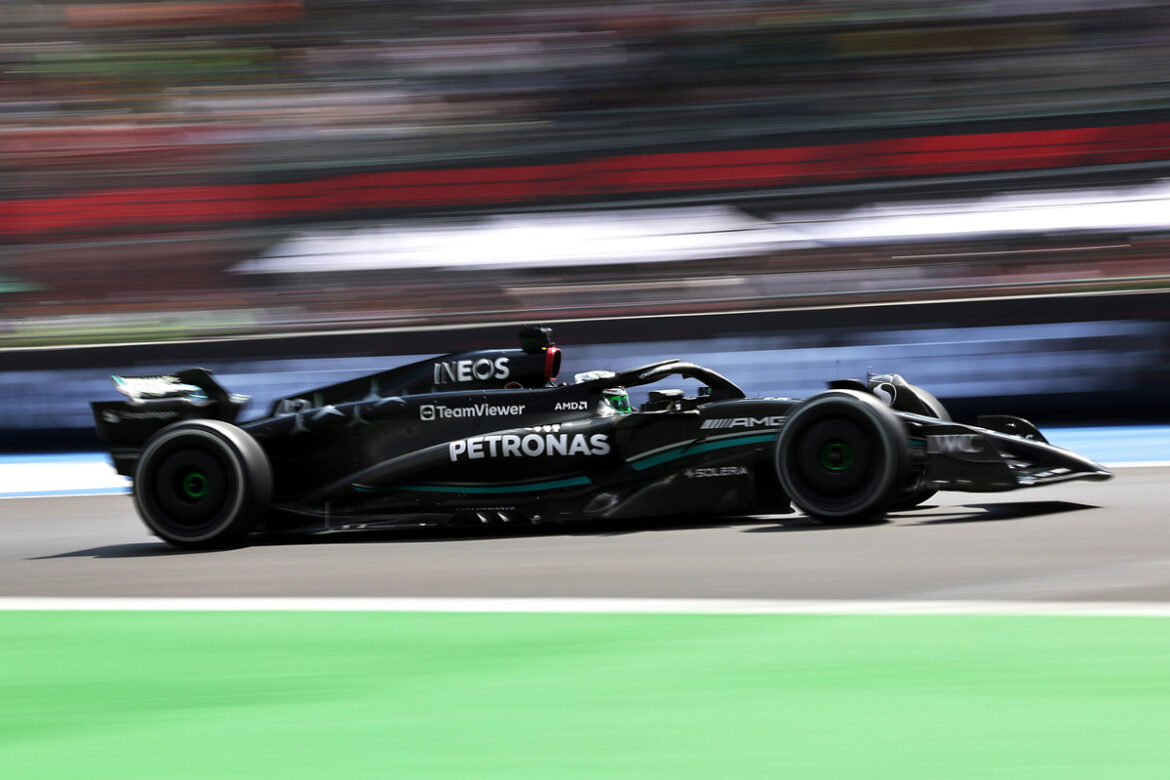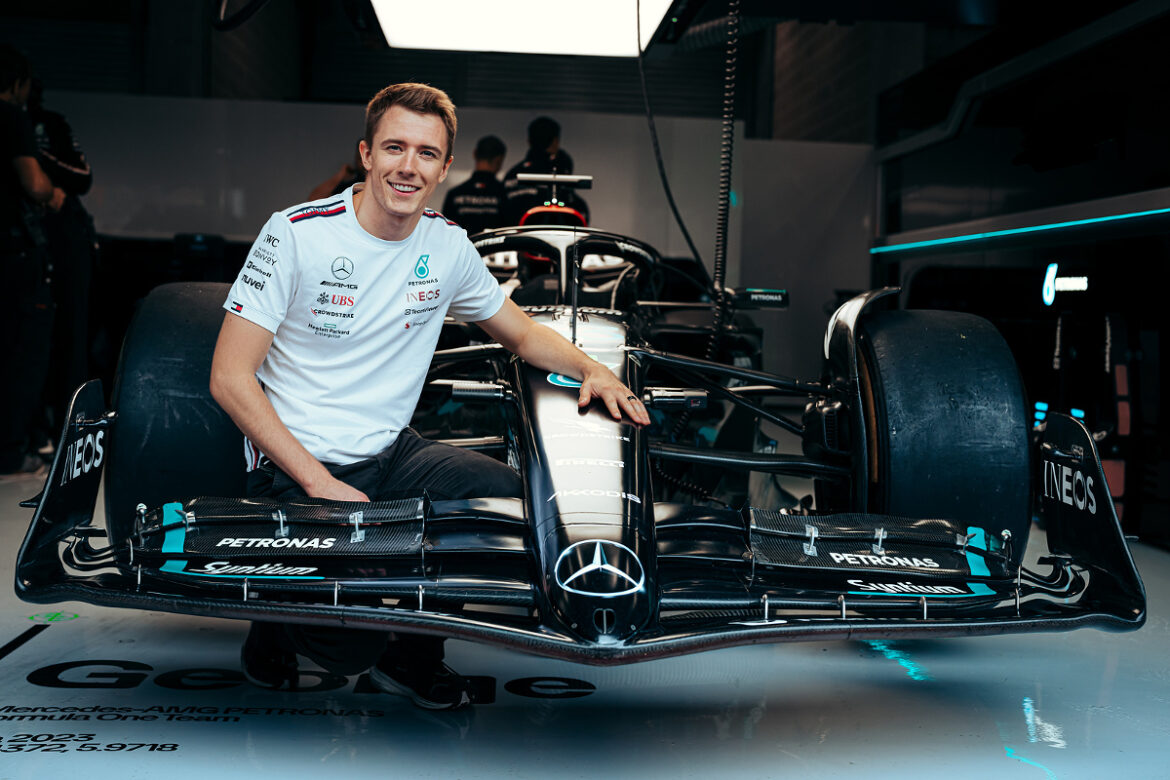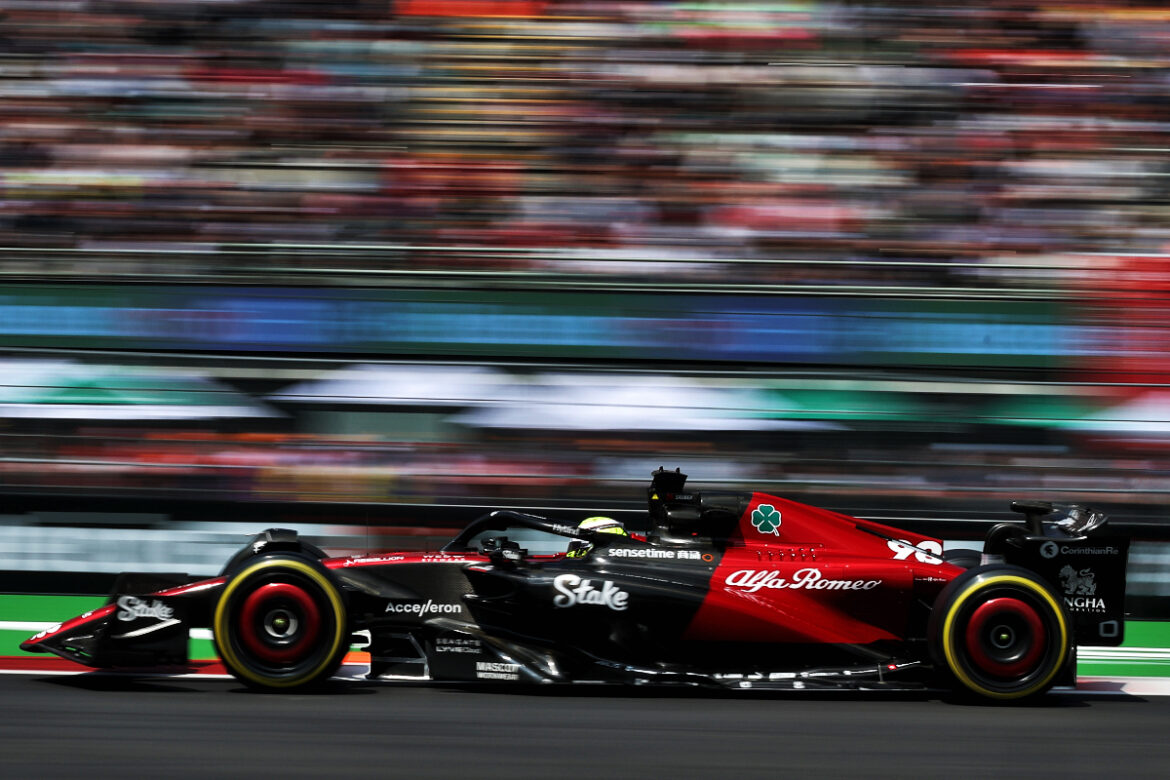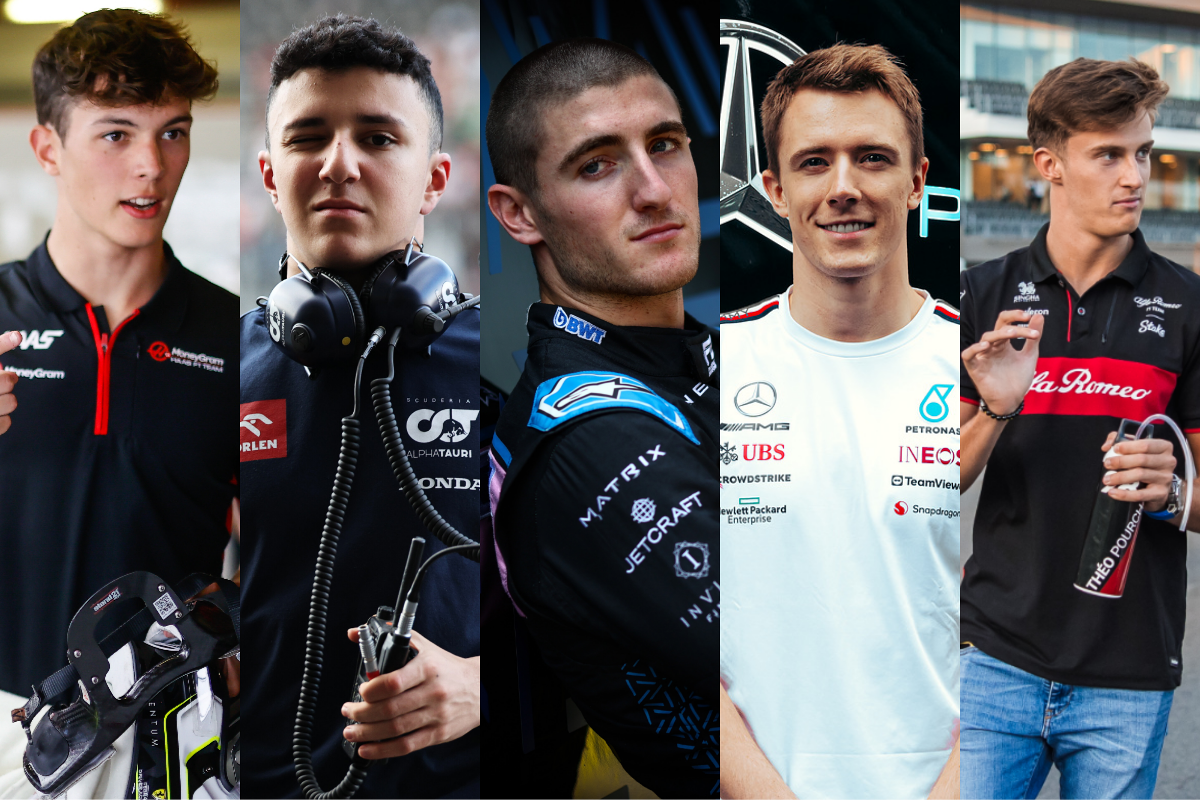 Five F2 stars were mixing it with F1 drivers on track yesterday in practice at the Mexico City GP. How did they find the experience, and more importantly did they impress on racing’s biggest stage?
Five F2 stars were mixing it with F1 drivers on track yesterday in practice at the Mexico City GP. How did they find the experience, and more importantly did they impress on racing’s biggest stage?
Since the 2000s, Formula 1 teams have used the first practice sessions on grand prix weekends to trial young drivers. Although the practice time in F1 has reduced in recent years, particularly since 2021 with the introduction of sprint races, seeing the names of junior single-seater racers on the timing screen during Friday’s track action has increased since then.
That’s because all F1 teams are now mandated to run a ‘rookie’ driver in each of their cars for a practice session during the season, and also because the structure of how those teams support young drivers has leaned towards practice outings being the ultimate reward – and the ultimate test – for F1 juniors outside of being handed a race seat.
Private testing of modern and older F1 cars is heavily regulated, there are few official tests (such as those to develop Pirelli’s tyres) that teams get invited to beyond the collective pre-season and post-season ones, and elements such as F1’s cost cap as well as the sprint and alternative tyre allocation formats used at some grands prix disincentivise teams from swapping out their race drivers for a less experienced alternative.
F1 2023 ‘rookie’ driver outings [pre-Mexico]
| Team | Driver | Round | 2023 |
|---|---|---|---|
| AlphaTauri | Nyck de Vries* | Bahrain GP | 21st in F1 |
| McLaren | Ocar Piastri* | Bahrain GP | 9th in F1 |
| Williams | Logan Sargeant* | Bahrain GP | 20th in F1 |
| Ferrari | Robert Shwartzman | Dutch GP | 8th in GTWCE Endurance |
| Aston Martin | Felipe Drugovich | Italian GP | F1 reserve driver |
*Drivers racing in F1 whose first practice session of their rookie season counted to their team’s quota
So although the FIA mandates providing track time to young drivers, there’s few race weekends where teams feel willing to do so. Which is why five of them reached the same conclusion that this weekend’s Mexico City Grand Prix – which runs to a normal weekend format and does not have Formula 2 on the support bill – would be an ideal time to plug a young driver in.
The five drivers who were chosen all came from F2, are already tied to F1 teams and have varying chances of making it onto the F1 grid in the future. Two really boosted their chances of doing so on Friday based on team feedback.
All were outpaced by their team-mates, but when comparing each’s ideal pace (accumulating their best sector times into a hypothetical best laptime) and actual pace, four of them were closer to the full-time F1 driver in the sister car on ideal pace because their inexperience made it harder to put a whole lap together. Particularly since the Mexico City track switches from a first sector which is all about heavy braking to a second sector full of high-speed sweeps and then a final sector populated by slow-speed corners.
Here’s how the five young drivers found that challenge, in their own words, and what the numbers said of their performances:
Ollie Bearman Haas 15th fastest (+0.345s on team-mate’s pace)
Best lap: 1m21.313s Best ideal lap: 1m21.094s (+0.646s) Lap count: 31 F2: 6th in standings (4 wins)
Bearman was the fastest FP1 debutant and sixth fastest overall in sector one, 0.184 seconds off the pace and 0.113s off Haas team-mate Nico Hulkenberg. He was very slow in the pitlane, often reaching F2’s 60kph limit rather than F1’s 80kph limit.
Part of the reason Bearman was considerably faster than his F2 rivals was his performance run took place 11 minutes later than anyone else’s and therefore on a far grippier track. On that run he set his first sub-1m22s lap, did a cooldown lap, then posted his best laptime. Before that his best was a 1m22.427s, slower than Isack Hadjar and Jack Doohan.
Bearman: “I’m really happy to have just delivered a clean session to start with. Second of all, I got up to speed quite fast, I felt I had a really good confidence with the car.”
“You don’t realise how fast you’re going until you hit the brakes. And then you’re like ‘oh wait, I’m not going to hit that apex’. Also the visibility is really tough. So I was actually struggling, especially in the first lap, to get my bearings. You have to kind of do it by feel rather than by sight.”
“I tested [Ferrari’s] 2021 car a couple of weeks ago and that was peak grip, peak performance. With this altitude and track conditions, especially to start with, we were also on an unknown tyre, the prototype, it was quite slippery out there. Felt like I was in F2 again, so that was quite nice.”
“The thing that surprised me was how much quicker you arrive in turn one on a quali sim rather than in the race. My first push on soft I probably left a bit of margin there.”
“I wanted to go to what I felt like was the limit. I was a bit weak in turn seven in the performance on the hard tyre. So I decided ‘I have confidence with the car, let’s see what it can do’, and I was a bit out of shape out of seven and that whole sequence was then in trouble. So I had to abort that lap, unfortunately. For sure with the soft that we have, it’s the first lap that is the fastest, so that’s a bit unlucky.”
“It was really hard [switching between compounds]. Went from a 15-lap old hard tyre on high fuel to a new soft, with the DRS open, and you arrive a lot faster. But we’re used to that in F2. You just have to basically trust the car. And I managed to get the trust quite early on. So it was tough, but I feel like I got the most out of it.”
Ayao Komatsu, trackside engineering director: “He didn’t put a foot wrong. I mean, he didn’t maximise the soft tyre. That laptime difference, Nico’s lap wasn’t great either so you can’t read too much into it, but in terms of his feedback, it was really good, engagement with his engineers.”
Isack Hadjar AlphaTauri 17th (+1.373s)
Best lap: 1m21.941s Best ideal lap: 1m21.495s (+1.168s) Lap count: 25 F2: 14th (1 podium)
Hadjar set his fastest lap at the end of his six-lap second run, having failed to maximise the soft tyres when they were at their best earlier on. He was eighth fastest in sector three, 0.294s off the pace and only 0.089s slower than team-mate Daniel Ricciardo, and he’s now earned himself another FP1 appearance with Red Bull Racing in Abu Dhabi.
Hadjar: “It’s the best day of my life! My first ever time in an F1 car was incredible, so I’m happy. There was so much going on with the procedures and traffic that it was overwhelming at first. It was tough, but I got into a rhythm quite quickly, and my confidence grew. During my first runs, I was struggling to get a lap without traffic, but in the last run, the race pace was quite good and consistent, and I could manage the soft compound for a few laps. It was a really good experience, and now I can’t wait to be back in the car.”
Jonathan Eddolls, chief race engineer: “He did a very good job with the team. With a similar downforce level to Monza and a green track to start, it’s definitely not a straightforward circuit for a rookie driver in a free practice session, but Isack did all we asked of him. He gathered some useful aero data and set competitive laptimes.”
Jack Doohan Alpine 18th (+1.432s)
Best lap: 1m22.109s Best ideal lap: 1m21.793s (+1.171s) Lap count: 25 F2: 4th (2 wins)
Doohan was the exception among the quintet since he did two F1 practice sessions in 2022, the first of which was in Mexico.
Doohan: “It was a really good session and I felt very comfortable in the car right from my first lap. I was glad to contribute to the team’s programme, which, on my side, focused on a couple of future test items. It was important to get through the session without any issues and tick all the boxes on our run list, which we were able to achieve trouble-free. I’ve been testing throughout the year in the 2021 car, so I definitely felt ready for today and it meant we could be right on it from the start.”
Bruno Famin, interim team principal: “Jack did a very good job. He did the job we wanted from him. He made no mistakes. He was regular in his laptimes during the long stint he made at the end of the session and we got the information we wanted to get from him and we are very happy with that. I think he has been instructed that as it was FP1 we were not looking for pure performance at all; it was not the point. And we’re happy with what he has done.”
Frederik Vesti Mercedes-AMG 19th (+2.213s)
Best lap: 1m22.937s Best ideal lap: 1m22.937s (+2.213s) Lap count: 26 F2: 2nd (5 wins)
Mercedes drivers’s set their best sector splits of FP1 on their fastest laps, with Vesti outpacing Lewis Hamilton by 0.119s in sector three but being slowest of all in sectors one and two. He lost 0.659s to his team-mate in sector one and 1.673s in sector two. Hamilton was third fastest in the lap’s high-downforce sector, while Vesti was 0.716s slower than anyone else.
Theo Pourchaire Alfa Romeo Racing 20th (N/A)
Best lap: no time Best ideal lap: no time Lap count: 4 F2: 1st (1 win)
Pourchaire: “I’m grateful to the team for this opportunity, even though we didn’t get much in terms of laps today. Unfortunately, I suffered an issue on the braking system at the beginning of the session, which prevented me to get any running throughout FP1 – the priority was, rightly, to promptly investigate the problem. Of course, it is a bit frustrating, as I was really looking forward to driving the C43 out on track.”
“I’m hopeful I will get some more time in the car, but now, I will resume my reserve driver duties.”
Xevi Pujolar, racing director: “We had a problem with the brake-by-wire system. We had a development item on the car, and unfortunately, it didn’t work. We tried to fix it during the session but then it was obvious that we had to remove the gearbox and to fix it. So, it was not… We couldn’t set any proper running with him.
“We have got another young driver session to do later in the season but we still haven’t decided who will be driving for that session.”
